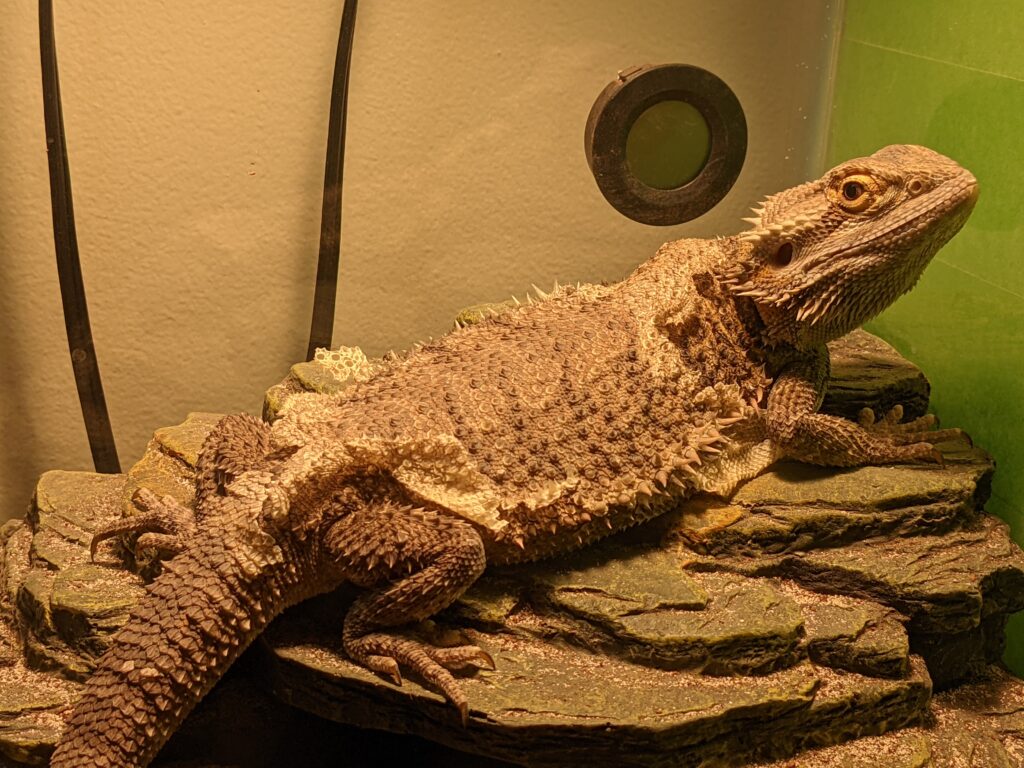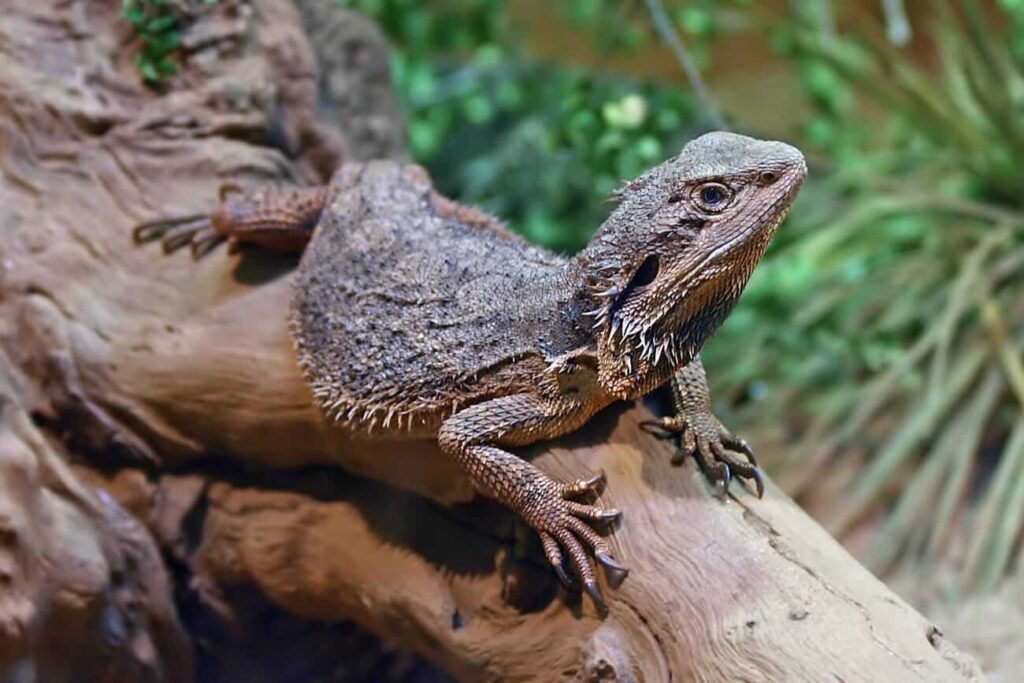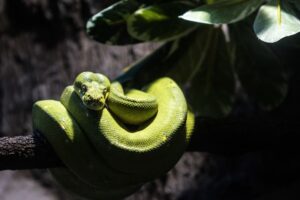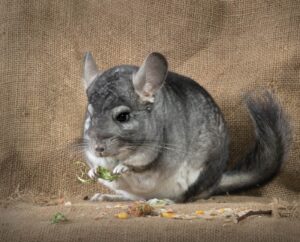Table of Contents
ToggleIntroduction

Bearded dragons, known for their captivating appearance and engaging personalities, have garnered a dedicated following among reptile enthusiasts. When Bearded Dragons Shed? These remarkable creatures, native to Australia, exhibit a fascinating aspect of their biology: shedding their skin. While shedding is common in reptiles, understanding when and how bearded dragons shed is essential for responsible ownership.
Understanding The Shedding Process
Anatomy of Bearded Dragon Skin
Epidermis: The epidermis is the outermost layer of a bearded dragon’s skin. This layer is responsible for forming scales, which provide protection and play a vital role in regulating body temperature and retaining moisture.
Dermis: Beneath the epidermis lies the dermis, a deeper layer that supports the skin’s structure and contains blood vessels and nerve endings. The dermis is essential for overall skin health and function.
Frequency of Shedding
Younger Dragons: Juvenile bearded dragons shed more frequently than adults because they are still growing rapidly. They may clear every 4 to 6 weeks.
Adult Dragons: As bearded dragons mature, their growth rate slows, and shedding becomes less frequent. Adult dragons may shed every 8 to 12 weeks or longer.
Signs that a Bearded Dragon is Preparing to Shed
Dull Coloration: One of the initial signs is a change in coloration. The dragon’s skin may appear dull or faded as the old skin separates from the new skin underneath.
Whitish or Cloudy Eyes: Bearded dragons often develop a milky or cloudy appearance in their eyes as shedding affects the translucent eye scales. It is sometimes called “eye caps” or retained eye caps.
Increased Restlessness: Bearded dragons may become more active and restless as shedding approaches. Some dragons may scratch or rub against objects to help loosen the old skin.
Reduced Appetite: It’s common for bearded dragons to eat less or refuse food during the shedding process. This reduced appetite is typically temporary, and they should resume their normal eating habits after shedding.
Shedding Behavior And Needs

Changes in Behavior During Shedding
Increased Restlessness: Bearded dragons may exhibit increased activity and restlessness during shedding. They might explore their enclosure more, scratch against objects, or become more alert.
Irritability: Some dragons may become more irritable or defensive during shedding, as the process can make their skin sensitive. It’s important to handle them gently and avoid unnecessary stress.
Reduced Appetite: A decreased appetite is common during shedding. Dragons may eat less or refuse food altogether. It is usually temporary and should not cause concern unless it persists for an extended period.
Creating a Comfortable Shedding Environment
Maintain Proper Humidity: Bearded dragons require a slight increase in humidity during shedding to help soften and loosen the old skin. A humidity level of around 40% is generally adequate.
Offer a Humid Hide: Place a humid hide, such as a small container with a damp substrate (e.g., sphagnum moss), in the enclosure. It provides a cozy, humid space for your dragon to retreat when shedding.
Avoid Handling During Shedding: Minimize handling during the shedding process to reduce stress. If handling is necessary, be gentle and avoid touching or pulling on the loose skin.
Preventative Measures And Veterinary Care

Maintain Proper Humidity: Ensure that the humidity in your dragon’s enclosure is within the recommended range during shedding periods. Using a reliable hygrometer to monitor humidity is essential.
Provide a Humid Hide: Offering a humid hide with a damp substrate can help your dragon remove shed skin more easily. This hide provides a cozy, humid space for your dragon to retreat to during shedding.
Consult a Veterinarian: If you suspect any shedding complications or health issues, don’t hesitate to consult a reptile-experienced veterinarian. They can provide guidance, address problems, and recommend treatments as necessary.
Regular Skin Inspections: Regularly inspect your bearded dragon’s skin to identify early signs of shedding problems, paying close attention to areas like the toes, tail, and eyes.
Consistent Humidity Management: Maintain constant humidity levels within the recommended range for bearded dragons during shedding periods, as this facilitates a smooth process and minimizes skin problems.
Hydration: Ensure your dragon stays well-hydrated by providing access to a shallow water dish. Some dragons may benefit from gentle misting or soaking in lukewarm water to aid shedding.
Assisting with Shedding
Shedding is a natural process for bearded dragons, and while they usually handle it on their own, there are times when they might benefit from some assistance. In this section, we’ll explore how to provide support during shedding, including gentle handling and bathing techniques, using a humid hide, and when it’s necessary to seek professional assistance.
Gentle Handling And Bathing Techniques
Gentle Handling: Your bearded dragon’s old skin can become sensitive during shedding. When handling your dragon, be extra soft and avoid putting pressure on areas with retained shed, such as the toes and tail.
Warm Bath: A warm bath can help soften the old skin and make it easier for your dragon to shed. Fill a shallow container with lukewarm water (around 85-90°F or 29-32°C) and allow your dragon to soak for 15-20 minutes. Gently support your dragon in the water, but never leave them unattended.
Assisting with Shedding: If you notice areas of retained shed, you can use a soft, damp cloth to rub the affected areas gently. Be cautious not to pull or force the shed skin, which can harm your dragon’s new skin.
Providing a Humid Hide
Creating a Humid Hide: Place a small container with a damp substrate (such as sphagnum moss or paper towels) in your dragon’s enclosure. This hide should be easily accessible to your dragon. Ensure that the substrate remains moist but not soaking wet.
Encouraging Use: Many bearded dragons naturally seek out the humid hide when ready to shed. However, some gentle encouragement, like placing your dragon near the leather or allowing them to explore it, can be helpful.
When to Seek Professional Assistance
Stuck Shed: If your dragon consistently struggles with stuck sheds, especially on the toes, tail, or eyes, it may require intervention from a veterinarian or experienced reptile handler.
Skin Infections: If you suspect a skin infection, which can sometimes occur during shedding due to unsanitary conditions, consult a veterinarian for diagnosis and treatment.
Excessive Stress: If your dragon becomes excessively stressed during shedding, leading to a loss of appetite, weight loss, or other concerning behaviors, seek veterinary guidance.
Conclusion
The shedding process in bearded dragons is a remarkable and natural occurrence, indicative of their growth and development. Understanding the intricacies of shedding, along with providing appropriate care and support, is vital for the well-being of these scaly companions. Bearded dragons exhibit various signs during shedding, including changes in behavior, dull coloration, and a need for increased humidity. Recognizing these signs and responding carefully ensures a smooth shedding experience.







